|
|
|
...
I will not tolerate that the weak shall suffer injustices brought
upon them by the mighty. What is just pleases me.... You, my
subjects, must not assume what the powerful undertake as sublime.
What the common man achieves is much more extraordinary.
Darius the
Great (522-486 B.C.) |
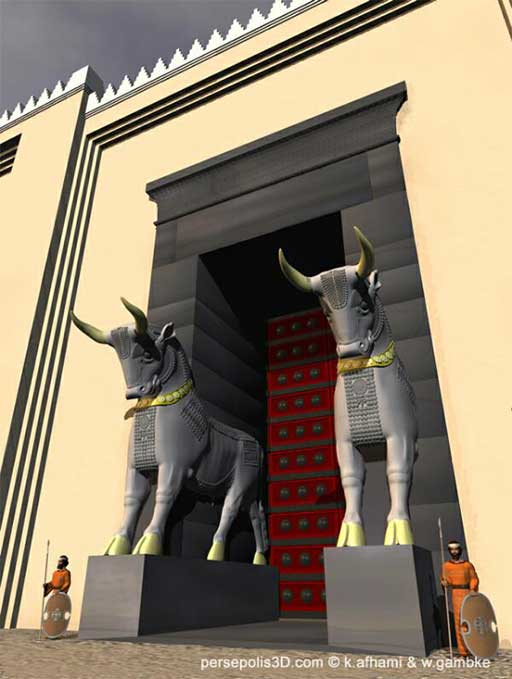 |
|
With such a
philosophy, shaped by the teachings of Zarathushtra, Cyrus the Great
founded the Persian Empire and Darius the Great immortalized it.
Persepolis was the spiritual center of
the first world power in recorded history. The air of tolerance,
leniency and dignity of mankind are manifest in the artistic
symbolism of the Persepolitan architecture. In 520 B.C., Darius,
aware of the moral responsibilities of the state over which he
reigned, called upon architects and artisans from every corner of
his vast kingdom – from Libya and Egypt to India, from the Danube to
the Indus, from the Caucasus Mountains to the Asiatic Steppes and
from the Aral Sea to the Persian Gulf – to work together with
Persian architects to create something never before seen, yet
unmistakably Persian. |
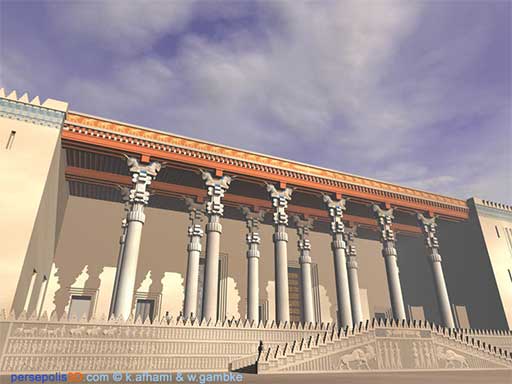 |
|
That magnificent
palace, a unique world heritage, was set on fire by the order of
Alexander the accursed of Macedonia in 330 B.C. when he defeated the
last Achaemenian king, Darius III. Rampaging through the Persian
empire he would leave a trail of death and destruction on a scale
not seen before.
Ruins of that
magnificent palace have endured for the past 23 centuries and give
the visitor a sense of the greatness of the palace.
Visual
reconstruction of the palace, made possible through latest computer
simulation based on historical records of the palace gives the
viewer a truer sense of the grandeur of the palace
The visuals
shown below were produced in late 20th century in
Germany.
The goal of this
endeavor was to bring Persepolis back to life - not only to show the
complexities of its urban design but also to illuminate the wealth
of details to a wide spectrum of both professionals and interested
laymen alike. Our work has integrated with exactitude all existing
and substantiated knowledge of Persepolis. |
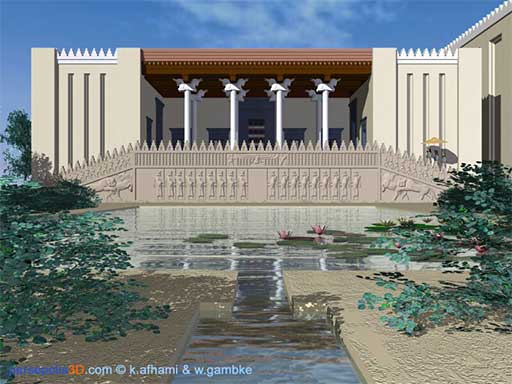 |
|
It is already
possible through this virtual reconstruction to step back into the
Persian Empire of the sixth century B.C. and visit the great
terrace, the monumental buildings, the palatial residences, the
public squares and the private gardens from every angle and
perspective. Every corner and angle of such sites can be created
from the viewpoint of the people who lived then.
To digitally
reconstruct these complex structures in their entirety including the
vast richness of detail is an undertaking that will require a great
deal of time to accomplish. The specific buildings can only
gradually be created and the great terrace will be built step by
step. What we at this point in time are presenting to you represents
only the preliminary fruits of our labor and will be both
qualitatively and quantitatively further developed - the results of
which can be monitored through our updates. |
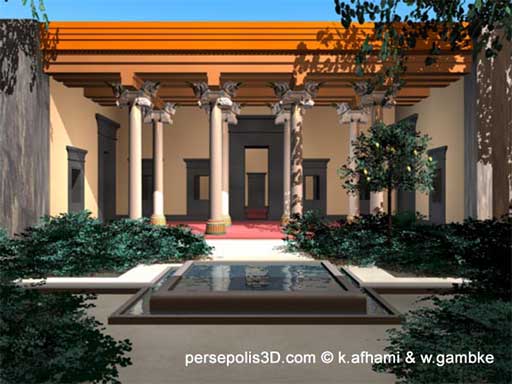 |
|
In order to move
at a faster pace with the reconstruction of Persepolis and its
introduction to the general public, we are looking to form
partnerships with other organizations that share our enthusiasm and
want to invest in this project to accelerate it or in other projects
and in addition produce educational DVDs, books, and other
merchandise to promote our great culture and heritage. We believe
such a project would also give rise to other opportunities not only
financially, but also socially and politically.
We believe more
needs to be done with respect to introducing and teaching the
culture and history of Iranzamin to the world, especially Iranian
children raised in various cultures and religions, as well as
Zoroastrian children of all nationalities.
For more
information about this project and the principals involved,[ii]
please visit
http://www.persepolis3D.com |
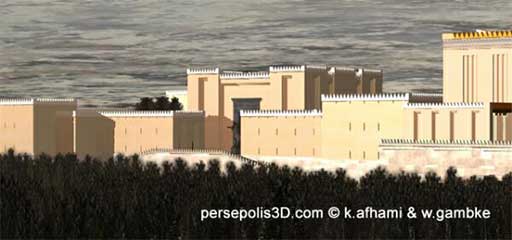 |
[i]
Posted on vohuman.org on January 18, 2005.
[ii] The author
acknowledges the support of Wolfgang Gambke and Sheda Vasseghi.
|